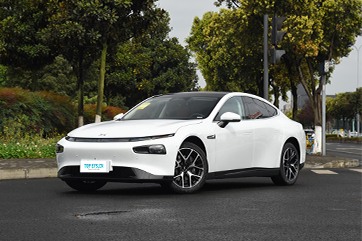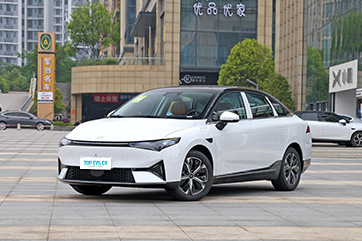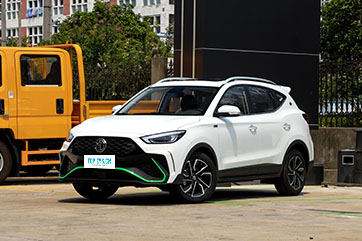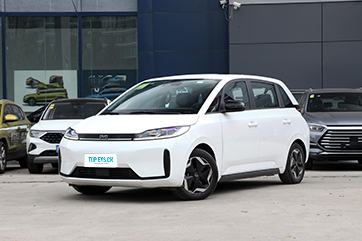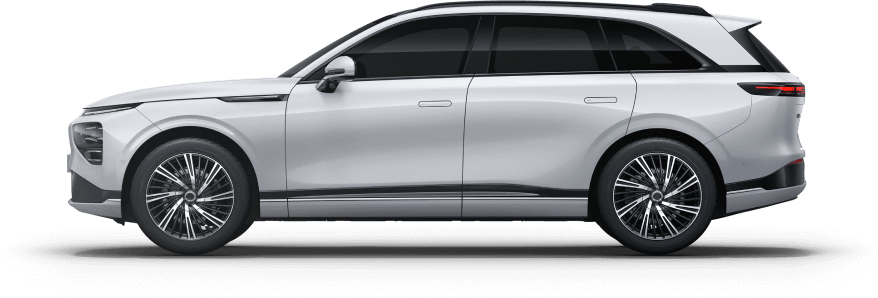China's new energy vehicle market is still accelerating furiously. Data from the Passenger Association shows that China's cumulative sales of new energy vehicles in the first five months of this year reached 2,783,000 units, an increase of 46.8% year-on-year, and the penetration rate reached 31.1%, an increase of 3.5 percentage points compared to 2022.
Among the new energy vehicle sales, pure electric vehicles are still the main force, with cumulative sales of 1.992 million units in the first five months, accounting for 71.6% of total new energy vehicle sales. Based on the further improvement of the charging infrastructure, the technological advancement of the three electric systems and the continuous improvement of the pure electric vehicle experience, domestic consumers' acceptance of pure electric vehicles is also gradually increasing.
.png)
Although the market space is large, the competition for pure electric vehicles is also extremely fierce, just installing a high-capacity battery and having the name of pure electric vehicle is not able to get a share in this round of rapid growth, so it is still necessary to have the core competitiveness or differentiated competition killer app, so as to have the strength to stand out.
The new energy brands have formed their own distinctive labels and have continued to strengthen their marks, which also provides support to participate in the subsequent more intense competition.
As a new energy company with strong technology attributes, Xiaopeng has always been committed to exploring technology to continuously advance the user's intelligent driving experience, and has formed a certain competitive advantage in the field of intelligent driving, the strength of XNGP first on the road has been fully recognized by the industry, and many car companies are now benchmarking Xiaopeng's research and development for the field of intelligent driving.
.png)
The latest mid-sized SUV, the Xiaopeng G6, is equipped with Xiaopeng's latest technologies in the fields of intelligent system, power supplement and vehicle intelligence, especially the industry's only mass-produced XNGP intelligent assisted driving system, which allows users to "free their hands" to a certain extent, relieving driving fatigue while also improving The pre-sale price of RMB 225,000 makes the G6 very competitive among mid-sized pure electric SUVs.
Still using intelligence as a barrier
Because of the ability to meet higher-order electricity needs, new energy vehicles have become the best carrier of automotive intelligence, which is incomparable to traditional fuel vehicles, so today's new energy vehicles are often indistinguishable from intelligent vehicles, since they are new energy vehicles, they represent a higher level of intelligence.
This is why many users, after enjoying the intelligent experience and more powerful and direct power output brought by new energy vehicles, say that they can no longer go back to the fuel car era, which is based on the solution of the user's pain points and the change of user demand brought by the improvement of experience.
.png)
In fact, intelligence contains more and more complex content, in which the car companies in the intelligent cabin part is difficult to open a significant gap, the consumer demand for intelligent cabin is not too high, voice interaction response, accurate identification, car ecological content, UI design simple, easy to operate, etc., can achieve the above needs, will rarely be bad.
However, as another key technology of intelligence - intelligent driving, it is easy to form technical barriers, especially in the algorithm, model and other dimensions, the technical path of each car company, the technical strength of a large difference, so the experience brought to the user also exists a large difference.
In the intelligent driving research and development, Xiaopeng car always adhere to the full stack of self-research, the core technology in their own hands, and take the lead in making intelligent driving from the highway into the city, the industry significance is obvious, so that some often shout slogans but always unable to implement the enterprise dwarfed.
.png)
In fact, the process of intelligent driving into the city is also relatively tortuous, before the car companies' technology route is mostly based on high precision maps to achieve urban intelligent driving functions, but due to the strict approval of high precision maps, and some cities for various reasons can not fully realize high precision map coverage, which leads to the pace of intelligent driving into the city becomes slower, the initiative can not be in the hands of car companies, so many car companies focus on turning, and The process of "waiting for the map" also relies on LIDAR to enhance the vehicle's perception of the external environment, so as to achieve close to the effect brought about by the high precision map.
The LCC enhanced version will have cross-lane diversions capability and will open up the ability to identify traffic lights and go straight through intersections, while in the second half of this year, most major cities across the country will open up the ability to turn left and right in areas without maps, making the mapless areas user experience close to that of urban NGPs.
In the four major cities of Beijing, Guangzhou, Shenzhen and Shanghai with high precision map coverage, vehicles equipped with Xiaopeng XNGP can achieve intelligent navigation-assisted driving from point A to point B within the city, and can not only complete dynamic driving tasks such as cruising and following in this lane, overtaking and changing lanes, and bypassing stationary vehicles or objects, but can also achieve behaviours such as starting and stopping at traffic lights recognition, autonomously hitting lights and changing lanes, and avoiding other traffic participants In urban scenarios, it can significantly improve the efficiency of daily commuting. In fact, this function basically realizes "driverless", but of course, the current regulations do not allow the vehicle to leave the control of the driver.
It is understood that Xiaopeng plans to launch XNGP "commuter mode" in the third quarter of this year, which can be used in any city to push targeted routes for commuting to and from work + high-frequency travel, allowing users suffering from morning and evening rush hour traffic jams to be relieved from the tedium of driving. In the future, the XNGP system in its full form will not rely on high precision maps and will be able to connect to various scenarios such as highways, cities and underground car parks in all cities across the country, helping to accelerate "driverless" into reality.
In addition to intelligent driving, the Xmart OS 4.0 in-vehicle intelligent system installed in the Xiaopeng G6 also allows users to experience the convenience brought about by intelligent interaction based on full time voice dialogue, four tone zone recognition, extremely fast dialogue, no network dialogue and so on, all of which will significantly enhance the driving experience, especially the four tone zone recognition function, which allows more accurate demand recognition, in some other brand models, there are often voice recognition confusion and interruptions of each other's voices between passengers in different zones, which are highly criticised by users.
The intelligence of the G6 is also reflected in the vehicle's intelligent construction, with the new vehicle adopting a front and rear unibody aluminium die-cast body and CIB battery body integration technology. The CIB battery body integration technology is a structured solution for the power battery, which not only reduces the height of the vehicle's core, but also improves space utilisation and provides a more stable driving experience.
Overall, the G6 is equipped with a number of leading technologies, which is in line with the Peng style, through the strength of technology to form a technical moat, in fact, there are some car companies are imitating the Peng, but often presented to the outside world is only a pile of technology or a blank cheque, which is meaningless, but will make the brand feel less good, only the real land and can improve the user experience of technology is the user is willing to pay for it. Only technology that is truly practical and enhances the user experience is what users are willing to pay for.
How to fight homogenisation
The market size of mid-size SUVs is second only to compact SUVs in the SUV category, with cumulative sales exceeding one million units in the first five months and a year-on-year growth rate of 18.1%. The rapid growth of mid-size SUVs is a direct reflection of the upgrading of consumption and the increase in the proportion of additional replacement purchases.
Mid-size SUVs are better than compact SUVs in terms of space performance, cutting-edge technology and safety, and are priced more affordably than mid-size SUVs, hence the high level of interest, with many consumers with sufficient budgets even choosing mid-size SUVs directly when buying their first car.
However, unlike the fuel car market, the pure electric SUV market is extremely uncompetitive today. Although the number of pure electric mid-size SUVs currently on sale is 31, the Tesla Model Y alone sells more cars than the remaining 30 combined.
According to data from the Passenger Association, 152,461 Model Y units were sold from January to May 2023, while the performance of other high-profile models within the segment has been disappointing. For example, plug-in hybrids aside, the pure electric version of the Tang sold 3,599 units in just five months; the pure electric version of the Askworld M5 had cumulative sales of 5,923; and the Azera ES6 was 4,500. compared to these vehicles, the pure electric version of the Zero C11 performed significantly better in the market, but also failed to break 10,000 units, at 8,726.
There are many factors contributing to the above phenomenon, such as the fact that some of the sales of the Model Y are sales exported to overseas markets. For example, the main version of sales of models such as Tang, Zero C11 and Askworld M5 is the plug-in hybrid version, and the pure electric version was distracted. But the most important reason is undoubtedly the price. With the successive price reductions of the Model Y some time ago, the starting price of this product has come to 263,900. Compared to them, the pure electric version of the Askworld M5 starting at 259,800, the pure electric version of the Tang starting at 282,800, the AION LX starting at 286,600 and the Azera ES6 starting at 338,000 do not have an advantage in terms of cost performance.
.png)
『Model Y』
And in today's car market, consumers may be more sensitive to price than you might expect. The best example is Wei brand, a year ago the Mocha DHT-PHEV was hailed as a good car, but the market performance was getting lower and lower, resulting in the whole brand's outlook being infinitely underestimated; now the Blue Mountain was launched at a price of 273,800 RMB, and consumers came to test drive it even until 21:30 pm, and the whole brand's market performance came back from the dead. The same can be said for Azera, where the net rumour is that 20,000 new orders for the ES6 have been added in just over ten days after the exchange of power benefits in exchange for a 30,000 yuan price reduction.
With this in mind, we look at the Xiaopeng G6, which has the intelligence and quality advantages mentioned above, but also a commendable price/performance ratio. 225,000 yuan is the pre-sale price, which puts it directly in line with the Model Y, and even most mainstream pure electric mid-size SUVs. From now on, four mainstream product groups are likely to gradually form in this segment: first, Model Y and products with this vehicle as an anchor, such as the Xiaopeng G6; second, Tang, Zero Run C11, Deep Blue S3, etc., which are plug-in hybrid/pure electric double repair; third, Azera ES6, which takes the high-end route; fourth, overseas brand transformation products whose sales have been difficult to pick up, such as BBA's related products The fourth is the transition products of overseas brands that have been struggling to make an improvement in sales, such as the related products of BBA, Toyota bZ4X, etc.
.png)
At least from the market performance of pure electric mid-size SUVs, the first category is naturally more popular than the remaining categories. After all, the success of Model Y has already proved the market potential and scale, and what other brands have to do is merely to follow Tesla's model by first copying the factors of the former's success and overtaking it through differentiated advantages. Obviously, the first advantage of the Xiaopeng G6 is already out there - cost effectiveness.
The second advantage is intelligent driving. This has already been analysed in the previous article and will not be repeated here. Although Tesla is also a company known for its intelligent driving capabilities, Xiaopeng's advantage over the former is its localisation and better understanding of Chinese road conditions and user driving habits. The XNGP, which is the first mass production car to hit the ground, has already proved this. As for other representative areas of intelligence such as the intelligent cockpit, Xiaopeng has also long established itself as an intelligent brand through the success of its previous products such as the G3 and P7. In terms of objective data dimension perception, the Xiaopeng G6 is also equipped with a dual Orin-X chip with an arithmetic power of 508 Tops.
.png)
The third advantage is in the area of electrification. In terms of the most basic comparison dimension of electric vehicles - range - the Xiaopeng G6 can reach 755km, while the Model Y tops out at 660km, a more significant difference between the two. In the area of replenishment, the Xiaopeng G6 has a more prominent advantage. Although it does not have the power exchange system of the Azera, the Xiaopeng G6 is the first to be mass-produced with the full domain 800V fast charging technology as standard, using 3C fast charging cores to support more current to receive more energy. If on the Xiaopeng super-charging pile, it can achieve the fastest charge of 10min range increase of 300km of replenishment energy, even in the third party social charging pile, compared to the 400V platform competitor, this car's 800V technology in the third party charging pile can increase the charging power by up to 80%.
As such, the Xiaopeng G6 will undoubtedly be a strong competitor to the Tesla Model Y in the mid-sized electric SUV segment, which is not yet fully competitive, but already has considerable potential. Although not yet officially launched, the product has already collected 25,000 interest deposits within 72 hours of opening its pre-sale. Perhaps this will be the second volume product in the mid-sized pure electric SUV market.

.png)
.png)
.png)
.png)
.png)
.png)
.png)
